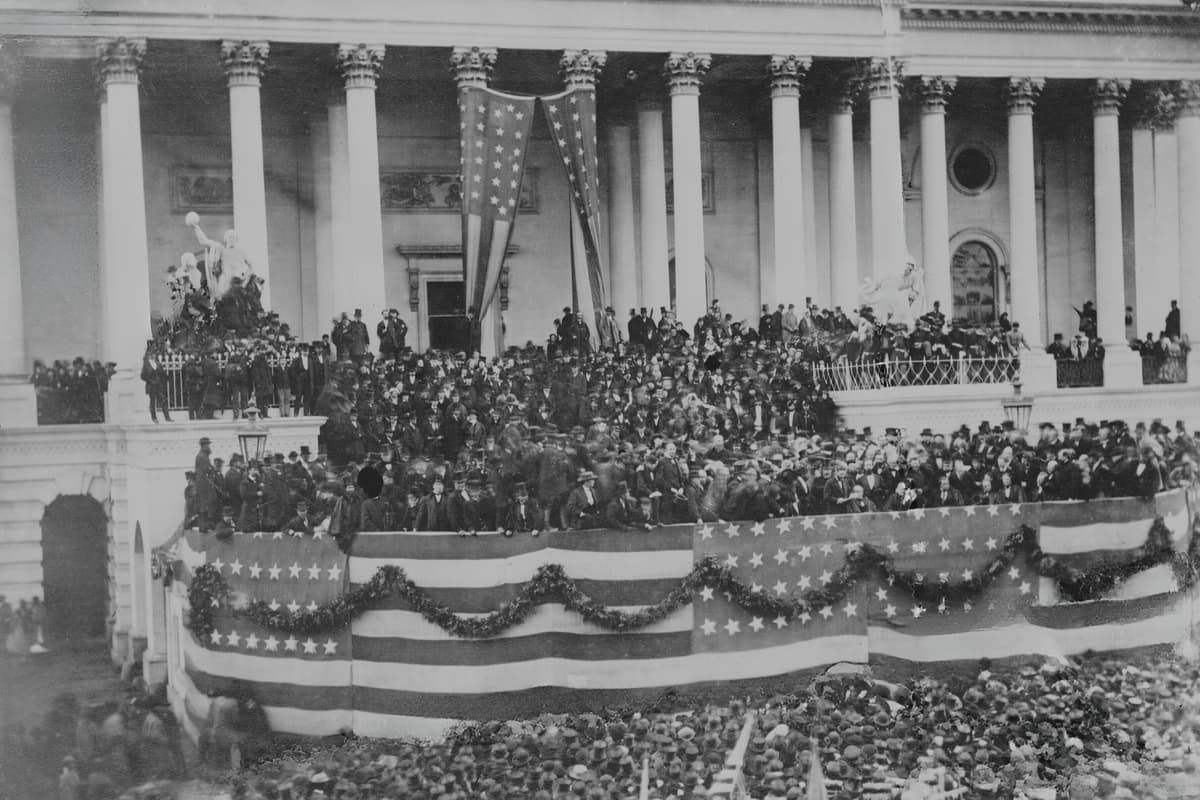When America Was at Its Richest
No wonder President Trump is beguiled of the Gilded Age.

Pavarotti himself couldn’t sing such praises as President Trump has lately been warbling in respect of the Gilded Age. We share the sentiment. “We were at our richest from 1870 to 1913,” he exudes. Mr. Trump marks the role of tariffs in the triumph, and there’s no doubt that they featured in America’s rise to global glory. Yet Mr. Trump overlooks another, even more crucial aspect of Gilded Age economics — America’s strong and stable dollar, good as gold.
In Mr. Trump’s “idealized framing,” as the Associated Press puts it in a long dispatch, America was “at its zenith in the 1890s, when top hats and shirtwaists were fashionable and typhoid fever often killed more soldiers than combat.” Yet while the AP calls the Gilded Age “a time of rapid population growth and transformation from an agricultural economy toward a sprawling industrial system,” it, too, overlooks the role of honest money in spurring that progress.
The Gilded Age — in Mark Twain’s quip — was, for all its faults, a monetary golden age. Paper dollars were convertible for gold at the rate of a 20.67th of an ounce. The discipline of convertibility led not only to rapid growth, but low inflation. The average annual rate of price increases between 1879 and 1913 was 0.1 percent, economist Michael Bordo reports. Fast forward to today’s reading of the producer price index showing a jump of 3.2 percent over last year.
Steep panics and sharp recessions were offset by growth and stable prices. The Gilded Age years didn’t emerge out of the blue. They were the result of years of hard work and economic sacrifices dating back to the end of the Civil War, during which America had suspended the gold standard and financed the war with paper. The term “greenback” arose for fiat dollars bolstered by the green ink on their reverse — unlike prewar paper money, convertible into gold.
The suspension of the gold standard — prefiguring Nixon’s abandonment of the Bretton Woods system in 1971 — ushered in an age of inflation and the fear of default on America’s debts. Yet unlike the fecklessness that followed Nixon’s demarche, Americans after the Civil War undertook to restore honest money. That meant making the decision to repay the federal debt in terms of the full gold value — not the fiat dollar price — of the amounts owed.
To be sure of victory, the sound money faction sought to amend the Constitution to ensure the debt would be repaid in gold. It was “the great financial problem now before the country,” the future president, James Garfield, declared in Congress in 1866 during the debate over the 14th Amendment. America had “embarked on the sea of paper money,” he warned, but “the tide must be checked” and “we must bring values back to the solid standard in gold.”
The question was decisive in the election of 1868, with the GOP candidate, General Grant, advocating a return to gold, per the 14th Amendment’s pledge that the “validity of the public debt” of America “shall not be questioned.” Grant’s election vindicated the 14th Amendment. He vowed in his inaugural that “to protect the national honor, every dollar of government indebtedness should be paid in gold” and that he would restore the dollar’s convertibility.
It would take until 1879 to return to “parity” between gold’s market price and the dollar’s legal value. The restoration of sound money marked the starting gun of the Gilded Age, and the economy was off to the races. The election of 1896 tested honest money, but the victory of the GOP candidate, William McKinley, over the pro-inflation bimetallist Democrat, William Jennings Bryan, paved the way for the Gold Standard Act of 1900.
That obtained, with a dollar devaluation in the 1930s, courtesy of FDR, until 1971 — all of which we bang on about again because it has never been more relevant. Mr. Trump’s inheritance of a fiscal and inflationary debacle echoes the challenge that GOP presidents faced after the Civil War. Rather than yielding to the temptation to let the value of the dollar slide, they acted to restore its gold backing with the growth strategy that today beckons Mr. Trump.

